With so much of our everyday lives being completed online, your personal information could be vulnerable if you don't know how to protect it from would-be cybercriminals. From online banking to payments and shopping, there are thousands of ways for a potential data breach to happen. Here are some of the best tips to up your data security for the new year.
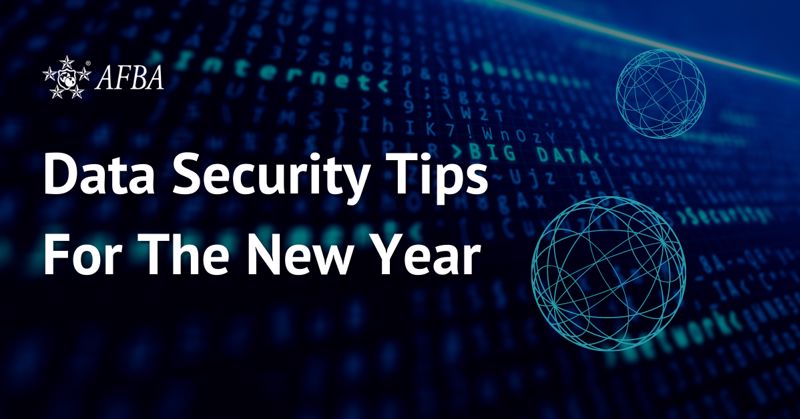
1. Don't save your payment information online
It is likely that if you buy things online, there is probably a website that you frequent because the shop has products that you know and like. Because of this, there is usually the option to save your debit or credit card for easier checkout. Sounds convenient and easy, right? While that may be true, going with an autocomplete option may not always be the safest. Even if you are shopping online from a reputable company, be aware that big retailers are not immune to hackers.
Cyber attacks are becoming more frequent and as security software innovates, online criminals adjust accordingly. Popular e-commerce hosts like Shopify and Magento have high-level security in place to protect their user's data, but accidents still happen. The best way to protect yourself from becoming a victim of an online criminal attack is to manually enter your card information every time.
2. Use a virtual private network
A good way to protect yourself is to use a virtual private network or VPN. This is especially true if you spend any amount of time using public wifi networks when transferring important personal data. This is because public internet connections are not as secure as your personal network. Hackers can easily spy on other people who are using the connection to purchase products online. A VPN makes sure that your data and personal information is secure, regardless of where you are, digitally. According to the service Surfshark, 31% of internet users protect themselves using a VPN.
Without a VPN, you leave yourself vulnerable to attacks. If you access your online bank account, input card information or do other personal activities using a public or shared internet connection, consider spending the small monthly fee to protect your personal data. If you are a frequent traveler, this extra layer of protection is well worth it.
3. Avoid phishing scams
Watch out for convincing phishing scams, which are far more intelligent than they used to be. A common method is through email or through a bogus internet ad. Before clicking anything or giving out any of your personal data, think twice. Ask yourself if it is coming from a reputable website or retailer and why they want this information. Another trick is to hover over the sender field so you can see the entire email address. Many spoof senders will have a combination of unique characters vs a qualified business name.
Remember, the majority of companies sending emails will not likely request financial information or include forms for sensitive information without you having previously requested it, or without the assistance of a secure document sharing program. If a random request like this hits your inbox, it's likely bogus! And if you aren't sure, it never hurts to give the customer service phone number a quick call to verify. Companies are often grateful to be made aware of scams and can keep track of specifics scams if a high number of users report similar experiences.
4. Change passwords frequently
We all have that one trusty password that we use for everything because it is so easy to remember. However, it is important to change your passwords every so often, especially for important things like your bank account, credit card or any other personal information on the web. According to electric.ai, you should change your passwords every 3 months. This will reduce the possibility that a cybercriminal will be able to hack into your data. It is important to make sure that you do not have the same password for more than one account. This adds another layer of protection to safeguard your personal information.
February 4th is the official creation day for the United Service Organizations (USO). The USO has been a fixture in military life for over 80 years. Let's dive into the history of the USO and how it impacts the modern military. According to their website, "Since 1941, the USO has been the nation's leading organization to serve the men and women in the U.S. military, and their families, throughout their time in uniform. From the moment they join, through their assignments and deployments, and as they transition back to their communities, the USO is always by their side."
An organization with a history
The organization was founded in 1941 and is private and not-for-profit. It also works with the Department of Defense (DOD). The organization was first formed in WWll to boost the morale of the troops and to encourage American citizen involvement in the war effort. President Franklin D. Roosevelt's goal was to foster more support for the men fighting overseas, which was much needed at the time. In fact, several preexisting organizations and associations were combined to create the USO. They were:
- The Salvation Army.
- The Young Men's Christian Association.
- The Young Women's Christian Association.
- The National Catholic Community Services.
- The National Travelers Aid Association.
- The National Jewish Welfare Board.
Most notably, the USO provided live entertainment to the troops and their families, which included comedians, actors and musicians. In addition, they also created social facilities for those in need, which they still actively do. Though they were disbanded between the end of WWll and the beginning of the Korean War, the USO was revived for the latter war and continued through the entirety of the Korean War, the Vietnam War, Lebanese peacekeeping, Gulf War, Afghanistan and the Iraq war.
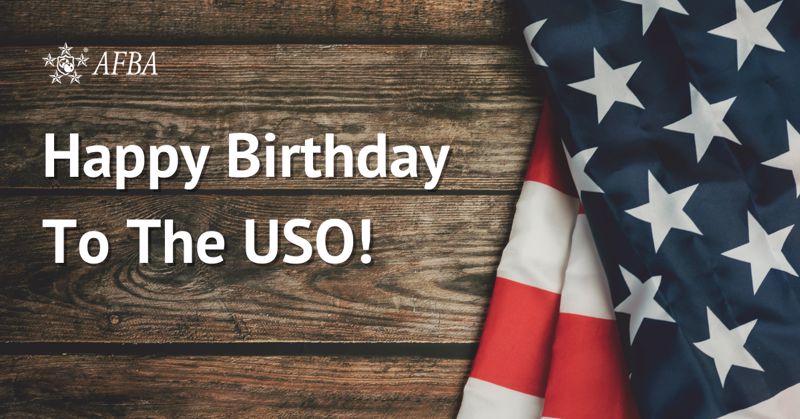
The USO today
Today, USO still provides important resources to those who are members of the military community. They have over 200 locations in 14 countries and 27 US states. The USO has over 250 centers that "extend to countries on every continent, operated by thousands of staff and volunteers whose goals are to match our service members' vigilance and provide best-in-class service to those who sacrifice so much for America," according to their website.
Services provided
The USO is a service that is provided to troops both while they are deployed and after deployment. They are also available for military families. Here is a short list of just some of the services offered:
- Operation Phone Home: The project offers military members internet connections and potential phones. 2.8 million minutes of free talk time and 760,000 wifi sessions were logged by service members connecting with their families in 2019.
- USO Care Package Program: You or someone you know can send a care package to the troops overseas.
- Entertainment: USO has provided more than 8.1 million center celebrity visits across the world.
- Transitioning Service Members and Military Spouses: The organization offers support and services to those who are transitioning to a new point in their service.
The USO has been around for over 80 years to provide different kinds of support to the military as a private, non-government entity. On February 4th, 2022 consider donating in celebration of the organization's birthday.
Donating blood is a way to give back to your community that can make a massive difference in someone's life. According to the New York Times, U.S. blood banks are experiencing their biggest shortage in a decade. This is partially due to the fact that there are many misconceptions around donating blood in the midst of the COVID-19 pandemic. Today, we will address some of the biggest myths surrounding the topic.
Donating blood is still possible
Many people might think that donating blood is not even possible because of the restrictions around hospitals. While there is some truth to this, there are still ways to give. There are different organizations that offer available locations where you can schedule an appointment to donate. Here are some examples:
- Red Cross: The Red Cross has a website where you can enter your zip code and find a blood drive near you.
- Association for the Advancement of Blood & Biotherapies: This link will help you find a permanent location near where you live.
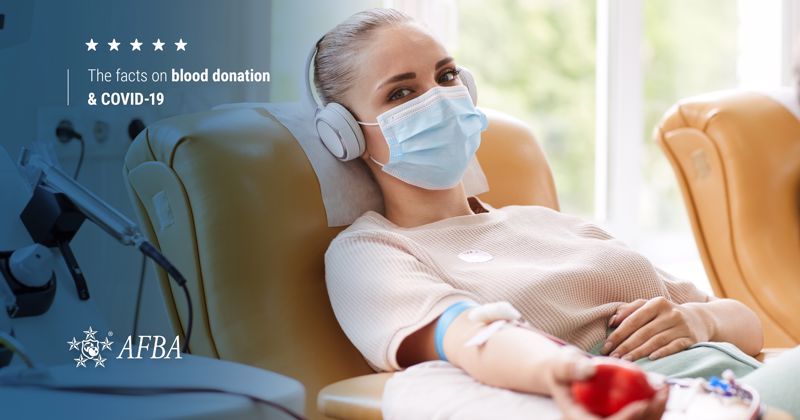
Passing the requirements is simple
Some people are nervous to donate because they are unsure if they qualify to do so. Here are the qualifications for whole blood donations according to Red Cross:
- Be at least 17 years old.
- Weigh at least 110 lbs.
- Not be on the following medications according to blood assurance.org
- Accutane.
- Antibiotics *Donors who are taking antibiotics are eligible to donate 24 hours after their last dose.
- Antiplatelet Medications.
- Blood thinners (such as Coumadin, Heparin, Lovenox, Warfarin).
- Bovine insulin.
- Hepatitis B Immune Globulin.
- Human-derived growth hormones.
- Find the full list on blood assurance.org.
Please note that all people who have taken a licensed vaccine, for COVID-19 or otherwise, are able to donate blood. The American Red Cross says that there is no deferral time for the COVID-19 vaccine manufactured by AstraZeneca, Janssen/J&J, Moderna, Novavax, or Pfizer.
Those who have had the virus can donate
A major myth that we want to bust today is that those who have had the virus can't donate their blood. This is absolutely not true. The FDA recommends that "individuals diagnosed with COVID-19 or who are suspected of having COVID-19, and who had symptomatic disease, refrain from donating blood for at least 10 days after complete resolution of symptoms."
This means that, even if you have had the virus, you are still eligible to donate blood to those who may need it as long as the donation happens at least 10 days after the symptoms have gone away. COVID-19 can not be transferred through a blood transfusion according to the FDA. Their website reported, on January 11, 2022, that "there have been no reported cases of transfusion-transmitted coronavirus, including SARS-CoV-2, worldwide."
Taking precautionary measures is important
While there are important precautionary measures to take in order to prevent COVID-19, blood donation is still necessary and possible. Here are some of the most important things that the Stanford
Donation Center is doing to maintain a safe blood donation environment, for example:
- Appointments are necessary.
- Equipment is sterilized, and most is single-use only.
- Hand sanitizers are placed throughout donation sites.
- Increased spacing between donors.
- Team members wear face masks while interacting with donors during the entire donation process.
- Team members at collection sites are fully vaccinated against COVID-19.
Because blood donations had previously relied heavily on mobile drives on college campuses and high schools, the pandemic has severely impacted donation levels. Find a location near you and learn more about donating today.
It's that time of year again! It's the season where you brainstorm the best holiday presents for the loved ones on your list, which can be tricky. You want to get them something they will love from a place that you don't mind supporting. This holiday season, consider buying something special from a veteran-run business. Not only are you sure to find something unique, but you will also be giving your money to a company that is owned by an American veteran. Here is our 2021 veteran-owned holiday shopping guide.
Black Rifle Coffee Company
This veteran-owned company is very popular and well known for its delicious blends of coffee. You can also purchase apparel, coffee bundles, mugs, cups, tumblers and so much more. They roast their coffee beans five days a week in their Manchester, TN and Salt Lake City, UT locations. When you buy one of Black Rifle Coffee Company's products, you support the veteran founders and contribute to their philanthropic endeavors. According to their website, they focus on, "serving this great country and are committed to supporting veterans, law enforcement, and first responders."
R. Riveter
This company is owned by the wives of two veterans, so when you shop on their website, you are supporting a veteran family. R. Riveter is co-owned by military spouses Lisa Bradley and Cameron Cruse and there are plenty of well-designed, gorgeous bags and purses to choose from. According to the website, the different "parts and pieces (of the bags) are made remotely across the country to provide military spouses with mobile, flexible income opportunities."
R. Riveter supports active-duty and veteran families so you know that your hard-earned money is going to a good cause. Not only that, but you will receive the perfect gift for that patriotic man or woman on your list. Be sure to check out their website for their 12 Days of Holideals for a bargain!
Stubble + 'Stache
The founder and owner Nick Karnaze served over seven years as an officer in the United States Marine Corps and is now a veteran. Nick created this beard and skincare company in remembrance of the combat death of his good friend and fellow special operations Marine Justin Hansen. Stubble + 'Stache has superior formulas and special ingredients as well as many different product options for the bearded man in your life.
Bottle Breacher
Former Navy SEAL, Eli Crane created Bottle Breacher to provide a one-stop shop for anyone shopping for an American patriot. The online store offers hand-crafted, "personalized man-gifts" but they also have a great selection of holiday presents and stocking stuffers for every patriotic person on your gift list. Their hero product is a .50 caliber shell that has been crafted into a bottle opener. Bottle Breacher has the option to add customized engraving and personalized gift wrapping.
These are all great options for a potential holiday gift and would support American veterans in their post-service entrepreneurial efforts. If you are a veteran or someone you know is, be sure to urge them to check out the Small Business Association funding for veteran-owned small businesses. This year, consider buying from a veteran and offer your patronage as a token of appreciation for their sacrifices.
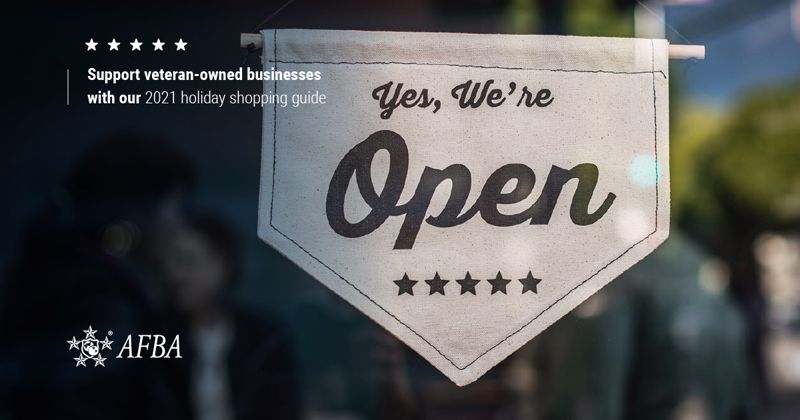
National Pearl Harbor Remembrance Day is on December 7th and was created to honor the men and women who lost their lives on the same day in 1941 during the attacks on Pearl Harbor, Hawaii. Each year, veterans, families, and American citizens gather to commemorate the 2,403 service members who were killed in the Japanese attack. Let's take a look back and learn a little more about why this day is so important.
Leading up to December 7
The Imperial Japanese Navy Air Service conducted a surprise strike that cost thousands of Americans their lives. Because most of the U.S. battleships in the Pacific at the time were located in the same Pearl Harbor port, they were a perfect target for the Japanese.
That fateful Sunday morning would "live in infamy" as stated by President Franklin D. Roosevelt. The radar station operators spotted a few unidentified planes that turned out to be the Japanese bombers.
According to the Navy ship deck log's running record, the attacks began around 7:55 AM and the main engines on the USS Arizona and the USS Oklahoma needed emergency repairs because they were among the first to be hit. From there, the USS Maryland, the USS California, the USS Solace and many other ships which were hit had logs that contributed to our current knowledge of the tragic day. With the chaos the day brought, the sequence of events is not perfectly known.
Because the attack was a surprise, there was an element of confusion at play that contributed to the response. The attack ended up lasting two hours and much of the U.S. Pacific Fleet was destroyed. This included 8 battleships, 3 cruisers, and 188 airplanes that were ruined and many lives lost. During the attack, despite the chaos and confusion, the U.S. military fought with extreme bravery to save their fellow men and salvage the damaged ships. Following the Japanese surprise, the United States declared war on Japan and was fully engaged in World War ll.
According to the Navy's military history website, fifteen U.S. Navy veterans were awarded the Medal of Honor, ten of whom sacrificed their lives in the Pearl Harbor attacks.
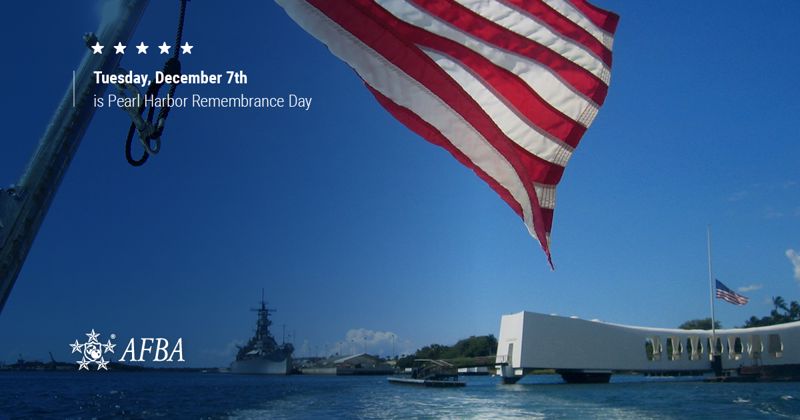
A day in remembrance
On August 23, 1994, congress created Pearl Harbor Remembrance Day and designated December 7th of every year as a day to honor the tragic losses of the attack in Oahu, Hawaii. Nationally sanctioned events occur every year in remembrance. The final event is a commemoration ceremony held at the Pearl Harbor National Memorial.
This year marks the 80th anniversary of the terrible and tragic attack on Pearl Harbor. The commemoration ceremony will be held at Joint Base Pearl Harbor-Hickam. This year's theme is Valor, Sacrifice, and Peace and will work to educate future generations not only about the attack but about the subsequent war. Aside from the main ceremony, there are different events leading up to December 7th that include ceremonies on the USS Nevada, USS Utah, and USS Oklahoma, which are open to the public.
This year, take the time to consider the implications of the attacks on Pearl Harbor and the over 2,000 lives lost that day or even attend the virtual panels that are available.
American military veterans are heroes for the work they do overseas and on the home front. Once they return to civilian life, this work shifts to their own home as parents and caregivers. Nearly 50% of veterans live in a household with children, making the need for reliable childcare a critical and important step to a well-adjusted and successful family life.
Let's first dive into the average childcare expenses to prepare for, as well as the top veteran-specific options for high-quality care and a few budget tips to further ease the financial expense.
The cost of childcare in America
Regardless of whether you are a veteran, childcare in America is expensive. According to a survey conducted by YouGov on behalf of Bankrate, most people pay an average of $8,355 per child for all-year care. This comes down to about "$750 per child per month during the school year and an average of $834 for summer child care." Cutting costs with a cheaper choice is an option, and some veterans may ask family members to watch their children, but high-quality and reliable childcare is valuable no matter who provides it.
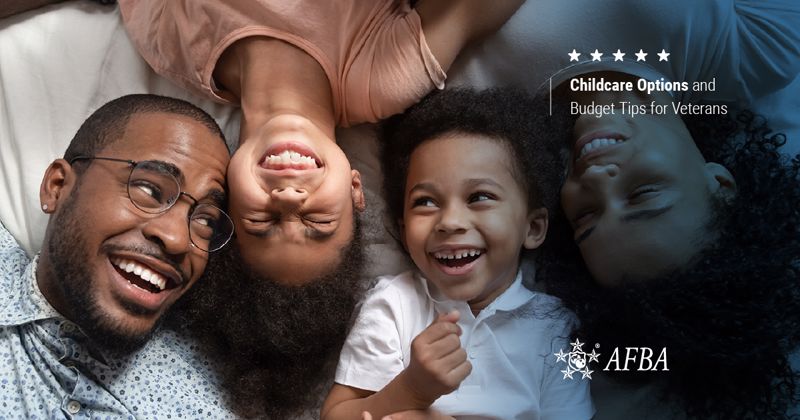
Even with subsidized and other government benefits, childcare can eat up a large portion of a family budget. Most public funding comes from the federal Child Care and Development Fund (CCDF), authorized by the Child Care Development Block Grant Act, or CCDBG.4, but there are some private childcare providers that offer discounted childcare for veterans as well.
Top veteran options for childcare
Below are some of the best childcare options, government-funded and otherwise, for veterans:
- The Office of Human Resources Management VA Child Care Subsidy Program: This is a childcare option provided by the U.S. Office of Veteran Affairs, where veterans are given a subsidy to put toward the cost of childcare. To see childcare centers local to your area, check out this interactive map feature which includes the name and address of places that are supported through the VA program.
- Financial assistance from Child Care Aware: Child Care Aware is a program that, according to their website, "serves more than 10,000 military children every year." Families from every branch of the military are supported through this fee assistance program, whether in an active-duty service member or veteran role.
- Ask if there are veteran discounts: Many childcare businesses and establishments that aren't associated with a federal agency want to show their support and gratitude to veterans through discounts, but many of them don't actively advertise these benefits. In some cases, savings can even apply to spouses of veterans. Never be afraid to ask if there are discounts available to your military family.
Additional tips and other options
If there are no VA-sponsored programs available in your area, try looking for a federal center within your state of residence. This additional resource page on the GSA.gov website can match you with a nearby option based on your region.
When seeking childcare coverage, start early. Childcare centers and in-home care providers often have a waitlist, and program approval processes can take a while to complete. Spend some time planning ahead and mapping out your needs so you can weigh these various options and utilize them if you qualify.
Childcare is one of the most important things to any parent, but the financial stress that it can add to the life of a veteran can be mitigated by using the above tips. The options are out there, and more Americans than you might think are working to support veterans and their families.
Childcare can be expensive and time-consuming for anyone, but the American Heroes that are veterans may have some options to alleviate some of that stress.
Since the start of the COVID-19 pandemic, scientists and researchers were hard at work trying to develop a vaccine for the virus. On December 11, 2020, the Food and Drug Administration (FDA) enacted the first emergency use authorization (EUA) for the administration of a vaccine to prevent COVID-19. The Pfizer-BioNTech COVID-19 Vaccine was the first to find approval, with Moderna not far behind on December 18, 2020. The single-dose Johnson & Johnson vaccine was approved on February 27, 2021.
Since then, 55.67% of Americans have received full vaccination against the COVID-19 virus (as of October 2021). However, some citizens still have questions about the safety and efficacy of the vaccine. Let's take a look at what it took to create a safe and effective tool in the battle against the deadly virus, as well as the FDA's approval process.
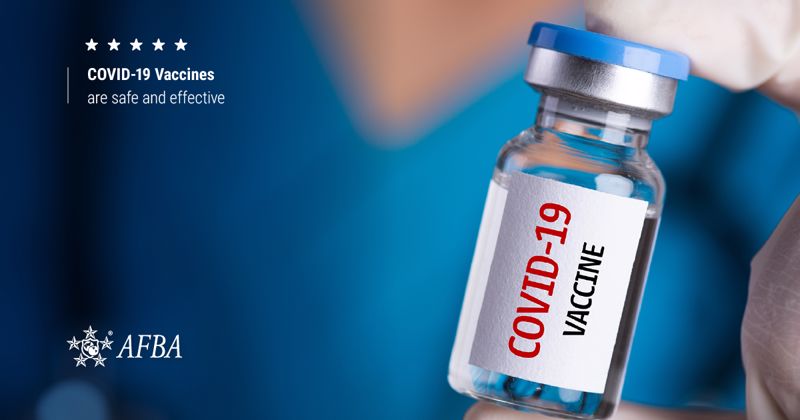
Preparation
Despite the fact that no one could have predicted the pervasive and world-altering COVID-19 pandemic, previous deadly coronavirus diseases like Middle East Respiratory Syndrome (MERS) and Severe Acute Respiratory Syndrome (SARS) laid the groundwork for the newest flu vaccines. In fact, scientists have been studying virology and respiratory communicable diseases for decades. According to the American Medical Association (AMA), prior research and vaccine developments aided in the speedy development of COVID-19 vaccines.
Because of the vaccinations that were created to aid in previous outbreaks, scientists were able to use the information to get a jump-start on the COVID-19 vaccine. Since the first SARS outbreak in 2003, vaccine researchers have been hard at work developing the most effective ways to prevent dangerous respiratory viruses. So while the development of the COVID-19 vaccination may have seemed alarmingly quick to the general public, it had actually been in the making for over a decade. Here is the typical, heavily regulated FDA process for developing the vaccine:
- Research and discovery
- Pre-clinical
- Phase 1 trial
- Phase 2 trial
- Phase 3 trial
- License and application to the FDA
The effectiveness of the COVID-19 vaccine
The FDA has strict guidelines for approving any kind of medication, especially vaccinations. Even when it comes to emergency approval, there are continual and ongoing reevaluations as the FDA notes its effectiveness in the real world. Here are some factors that the FDA looks for when evaluating "real-world vaccine effectiveness":
- Population host factors: This is how the vaccine impacts people who may have not been included in the trials.
- Virus factors: Potential variants and changes to the original virus.
- Programmatic factors: How well the vaccines are administered and whether the population is adhering to guidelines.
So how effective is the COVID-19 vaccine? The Centers for Disease Control (CDC) reports that those who took both doses saw a reduction in their risk of COVID-19, including severe illness by 90% or more.
How safe is the COVID-19 vaccine?
Because the new vaccine has been developed using research that has been tried, tested and successful for decades, the vaccines are extremely safe. According to the CDC, the COVID-19 vaccine has undergone some of the most rigorous and strict testings in the Center's history. Even still, they undergo intensive monitoring to ensure that the vaccines remain safe and effective.
Millions of people have been safely vaccinated and we are already seeing positive results in communities that have been responsive. According to the U.S. Department of Health & Human Services, vaccinations have led to the prevention of "265,000 COVID-19 infections, 107,000 hospitalizations, and 39,000 deaths among Medicare beneficiaries between January and May 2021."
Both the CDC and the FDA have made research and testing information public in an attempt to dispel any potential vaccine hesitancy. Even if you have already had COVID-19, vaccinations are necessary to help build protection and boost herd immunity.
Worried about getting sick after vaccination? Fear not. According to the CDC, "none of the COVID-19 vaccines contain the live virus that causes COVID-19 so a COVID-19 vaccine cannot make you sick with COVID-19." However, consult your physician to find out more about the possible side effects and your vulnerability level.
To learn more about the safety and efficacy of the COVID-19 vaccine, visit the CDC or the FDA's websites.
As the COVID-19 pandemic continues to negatively impact the U.S., the Pentagon is taking steps to keep its employees safe and to set a good example for the rest of the country.
The facility updated its mask guidelines for the facility in the month of July, and mask mandates were added not long after. The Pentagon changed its rules in order to comply with the CDC and direction from the DoD.
How the mask mandate has changed
According to the DoD, the Pentagon’s Director of Administration & Management has made it mandatory to “wear a mask in an indoor setting in installations and other facilities owned, leased or otherwise controlled by DoD in the Pentagon Reservation.” All service members, federal employees, onsite contractor employees and visitors must follow these guidelines, even if they are fully vaccinated.
The original mask mandate and all subsequent updates issued by Deputy Pentagon Press Secretary Jamal Brown have been published in a document called the “Updated Mask Guidance for the Pentagon Reservation.” The goal of the guidelines is to protect government employees and to set a good example for the rest of the nation, through the CDC suggested guidance.
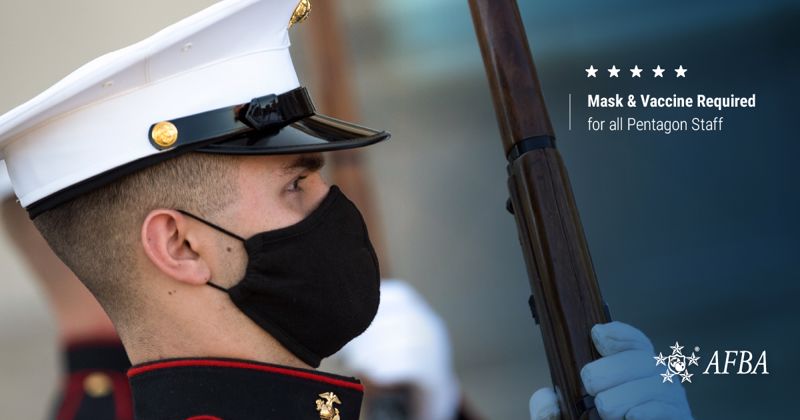 The appearance of U.S. Department of Defense (DoD) visual information does not imply or constitute DoD endorsement.
The appearance of U.S. Department of Defense (DoD) visual information does not imply or constitute DoD endorsement.The CDC guidelines
The Pentagon’s updated mask requirements came only a day after the CDC changed and updated its mask suggestions and mandates. The mandate requires people in “substantial or high transmission” areas to wear a mask, and that includes the Pentagon and several military bases. The new mandates came as a result of the pervasive Delta variant. Here are some of the most notable changes that the updated CDC mandate made that the Pentagon followed:
- Mask suggested for even those who are vaccinated.
- Masks recommended, regardless of transmission level.
- Testing and isolation suggested for those before and after travel.
Pentagon aims to protect employees with new safety guidelines
On August 23, 2021 Defense Secretary Lloyd Austin made it mandatory for all active service members and Pentagon employees to be vaccinated as well. This came on the heels of the FDA approval of the Pfizer-BioNTech vaccine.
With the combination of the vaccination and updated mask mandates, the DoD and the Pentagon are taking steps to stop the spread of coronavirus and its variants. There is no excuse for visitors, as the memorandum says, “Personnel coming on to the Pentagon Reservation or other facilities who do not have a mask may be provided one by DoD.”
As the world continues its struggle against the COVID-19 virus, the U.S. DoD will lead the battle against the pandemic on its bases and facilities.
National Suicide Prevention Lifeline: 1-800-273-8255
Suicide is a concern no matter what community you are a part of, but it has a unique impact on first responders, military veterans and active-duty service members. Rates of suicide are especially high among veterans and those who are serving on active duty, due to the circumstances that members of the military are put in.
With serious contributing factors like trauma, Post Traumatic Stress Disorder, stress and anxiety, suicide has always been a major issue for these groups. However, DoD has reported some of the highest suicide rates during the past four years in particular. In 2019, the rate of suicide among active-duty troops was 25.9 per 100,000 troops, and it has been steadily climbing.
Here are some suicide prevention resources for veterans, active-duty troops, and their families.
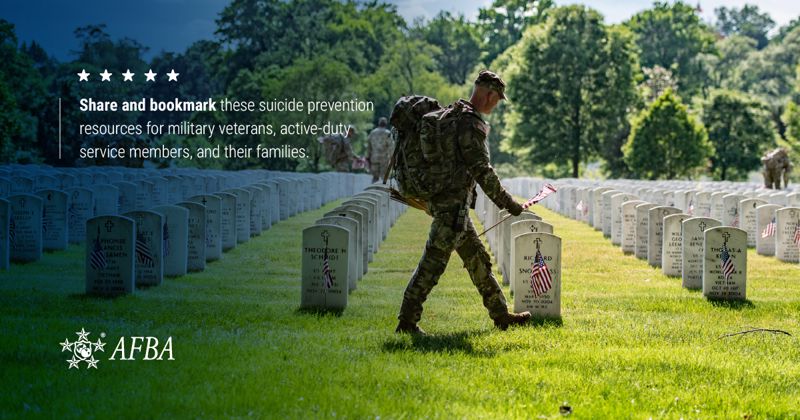 “The appearance of U.S. Department of Defense (DoD) visual information does not imply or constitute DoD endorsement.”
“The appearance of U.S. Department of Defense (DoD) visual information does not imply or constitute DoD endorsement.”Resources for active-duty troops
Military Crisis Line: 800-273-8255
Active-duty troops face situations and circumstances everyday that not only take a physical toll, but that can have long term mental effects as well. Here are some hotlines and programs that can help to address thoughts of self harm and suicidal ideation.
Overseas crisis assistance
- Europe: Call 00800 1273 8255 or DSN 118
- Korea: Call 0808 555 118 or DSN 118
- Afghanistan: Call 00 1 800 273 8255 or DSN 111
- International crisis chat: https://www.veteranscrisisline.net/get-help/chat
Government provided assistance
Military OneSource provides free and confidential therapy for troops and military families. Whether you or someone you know is struggling with depression, anxiety, PTSD or adjusting to a new life, Military OneSource is here to help.
- Call: 800-342-9647
- Live chat option
- Schedule an online consultation
Resources for veterans
Veterans Crisis Line: 1-800-273-8255
Active duty and military service can leave a lasting impact on veterans. Even years after their service, members of the military face mental health struggles. Preventative action through therapy, medication or even self help is important. Use these resources yourself or send them to a veteran who may find them useful.
- Make the Connection: This website has everything from additional resources to ways to connect with other veterans near you who may understand what you’re going through.
- Coaching Into Care: This is a government-based national telephone service for veterans that provides free coaching from licensed psychologists and social workers. You can also call 888-823-7458 for support.
- Military and Veterans Caregiver Network: Provided by the American Red Cross, this is a community based program that focuses on “peers engaged to exchange experience, empathy, education and encouragement.”
Resources for military families and first responders
Whether you are the loved one of an active-duty troop or a veteran, your mental health can face challenges as well. If you have lost someone to active duty or suicide, its important to seek community. Tragically, suicide is also prevalent among military families.
- Suicide Bereavement for Veterans and Military Families
- Tragedy Assistance Program for Survivors
- Crisis center for first responders
- Psychological Health Resource Center
It’s important that our first responders and veterans feel supported and that they know that there are resources out there. This list of resources are relevant all year around, not just during Suicide Prevention Week. The DoD has more resources that focus on mental health for the military, veterans and their families.
The United States has participated in every Olympic Games since 1896, but 2021 marked the first time a U.S. service member won a gold medal at any Olympic event. 1st Lt. Amber English made history on Monday, July, 26, 2021 at the 2020 Tokyo Olympic Games by winning first place in the shotgun skeet event. Not only did she win a gold medal, she set an Olympic record by hitting 56 of 60 targets.
The US Army in the Tokyo Olympics
English is not the only service member to make the trek to Tokyo to represent the U.S. and its military in the Olympic games. The U.S. military attracts some of the country’s most talented individuals, so it is common for these individuals to find themselves qualifying for the Olympics.
In fact, the Army has a World Class Athlete Program (WCAP) that helps train high-level athletes, known as Soldier-Athletes, for international competitions with the ultimate goal of qualifying for the Olympic and Paralympic games. The WCAP has produced 446 soldiers who have participated in the games, earning 111 medals since 1948.
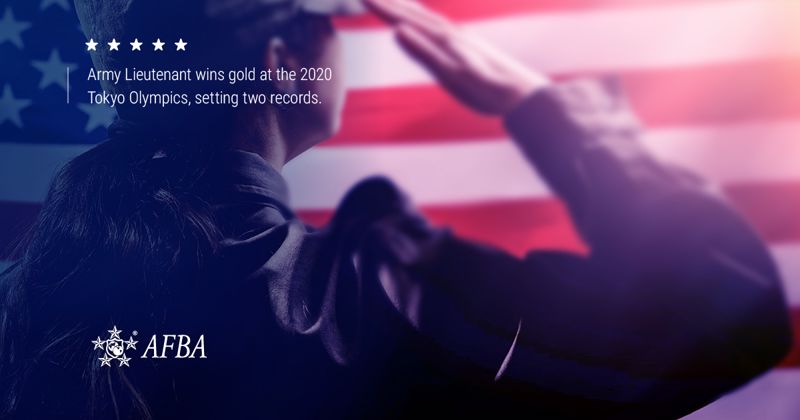 Army Lieutenant wins gold at the 2020 Tokyo Olympics, setting two records.
Army Lieutenant wins gold at the 2020 Tokyo Olympics, setting two records.In the 2020 Olympic games, WCAP trained and sent 9 Soldier-Athletes to Tokyo to represent the U.S. The participants include:
- 1LT Amber English: Shooting – Skeet
- SSG Naomi Graham: Boxing – Middleweight
- SSG Nickolaus Mowrer: Shooting – 25m Air Pistol & 50m 3-Position Rifle
- SSG Sandra Uptagrafft: Shooting – 25m Air Pistol & 25m Sport Pistol
- SGT Amro Egleziry: Modern Pentathlon – Individual Event
- SGT Ildar Hafizov: Wrestling – Greco-Roman
- SGT Samantha Schultz: Modern Pentathlon – Individual Event
- SPC Alejandro Sancho: Wrestling – Greco-Roman
- SPC Bernard Keter: Track – 3,000m Steeplechase
The road to gold
After English brought home the gold, Defense Secretary Lloyd Austin wrote a congratulatory tweet to her that read, “Your country is extremely proud of you today, and I’m so glad you’re representing us.”
English’s journey to setting a record and making history as the first U.S. service member to take the No. 1 spot was not an easy one. After barely missing out on qualifying for the 2016 Olympics on her own, she worked diligently to make the 2020 shotgun team. She joined the Army in 2017 and was able to utilize the military’s training resources. In 2018, English took bronze in the World Championships and continued to prove herself a skilled marksman.
Shooting runs deep in her veins, as English comes from a family of successful shotgun competitors. Both sides of her family participated in shooting events. Her father and her uncle made it to the Olympics in the running shotgun event, while her mother and aunt shot rifles in college. Her father’s passing in 2016 served as inspiration for her to join the Army.
In a 2020 article, English said, “I knew I had to completely change everything I was doing in my life – I joined the Army, moved (from Colorado Springs, Colorado) down to Fort Benning (Georgia) and surrounded myself with a seriously winning atmosphere, so it paid off.”
The 2020 Olympic games are anything but usual, but English was able to prove her marksmanship regardless of the circumstances.
